
A part from being a surface on which to mix, an artist’s palette is also simply a collection of colours that they’ve chosen to use. Some artists’ palettes can appear to be an almost random selection but generally most will be based on a range of cool and warm colours – there will be a selection of various shades of the primary colours blue, red and yellow.
In addition, artists will often include some secondary colours (orange, purple and green) as well as neutrals such as blacks and greys. Most will use some convenience mixes – secondaries or tertiaries that they use frequently – and of course we all have colours that we simply just like. It is so easy to get carried away with the range of hues that are available today, but I firmly believe that, irrespective of what colours you use, it is vital to understand how they relate to one another.
With many colours in your palette, it becomes increasingly difficult to remember just what will happen when any two are mixed and adding a third to the equation takes the possibilities off the scale. By restricting your palette, I believe you will effectively have a better range of potential mixes – simply because you will remember how they mix. The result is more appropriate colours, along with less confusion and greater harmony.
UNDERSTANDING USEFULNESS
This story is from the March 2021 edition of Artists & Illustrators.
Start your 7-day Magzter GOLD free trial to access thousands of curated premium stories, and 9,000+ magazines and newspapers.
Already a subscriber ? Sign In
This story is from the March 2021 edition of Artists & Illustrators.
Start your 7-day Magzter GOLD free trial to access thousands of curated premium stories, and 9,000+ magazines and newspapers.
Already a subscriber? Sign In

Still life IN 3 HOURS
Former BP Portrait Award runner-up FELICIA FORTE guides you through a simple, structured approach to painting alla prima that tackles dark, average and light colours in turn
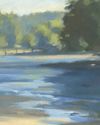
Movement in composition
Through an analysis of three masterworks, landscape painter and noted author MITCHELL ALBALA shows how you can animate landscape composition with movement
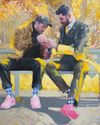
Shane Berkery
The Irish-Japanese artist talks to REBECCA BRADBURY about the innovative concepts and original colour combinations he brings to his figurative oil paintings from his Dublin garden studio

The Working Artist
Something old, something new... Our columnist LAURA BOSWELL has expert advice for balancing fresh ideas with completing half-finished work
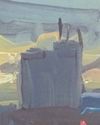
Washes AND GLAZES
Art Academy’s ROB PEPPER introduces an in-depth guide to incorporating various techniques into your next masterpiece. Artwork by STAN MILLER, CHRIS ROBINSON and MICHELE ILLING
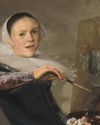
Hands
LAURA SMITH continues her new four-part series, which encourages you to draw elements of old master paintings, and this month’s focus is on capturing hands

Vincent van Gogh
To celebrate The Courtauld’s forthcoming landmark display of the troubled Dutch master’s self-portraits, STEVE PILL looks at the stories behind 10 of the most dramatic works on display
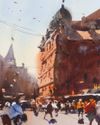
BRING THE drama
Join international watercolour maestro ALVARO CASTAGNET in London’s West End to paint a dramatic street scene
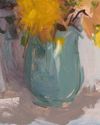
Serena Rowe
The Scottish painter tells STEVE PILL why time is precious, why emotional responses to colour are useful, and how she finds focus every day with the help of her studio wall

Bill Jacklin
Chatting over Zoom as he recovers from appendicitis, the Royal Academician tells STEVE PILL about classic scrapes in New York and his recent experiments with illustration